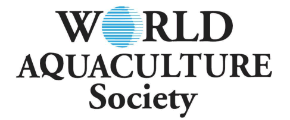CENTROPOMUS UNDECIMALIS OBTAINED IN LAB: GROWTH OF JUVENILE IN FLOATING CAGES IN VERACRUZ, MEXICO
Centropomus undecimalis, is a species highly appreciated for sport fishing and human consumption. In the Gulf of Mexico, White Seabass is considered a highly sought-after species and its heavily exploited fishery; the decline of this is a documented fact that obliges see aquaculture of the species, as the alternative to meet demand, mainly for human consumption.
Lack of seed laboratory to caused fattening these animals fail to start, as a result, little is known of this stage, in this and many other species of fish that are not produced in the laboratory. For some years in different places around the world efforts are made to obtain laboratory offspring that facilitate broiler processes; however, have been few successes, including the results of Ibarra et. al.(2011 in the UMDI, UNAM, Sisal) where larvae and juveniles of this specie in controlled conditions have been obtained by hormonal induction, spawning and spontaneous fertilization. So, this work raise with the goal of bringing out fattening in floating cages in a coastal lagoon, using youth White Snook produced in the laboratory. Thirty five days after hatching juveniles were transferred to an outdoor laboratory area for the precria. They stayed there for 30 days more and were fed with formulated feed of Otohime brand until they were transferred 800 km to the floating cages site located at Laguna del Ostion in Veracruz State, southeastern Mexico. Twelve hours transfer was carried out by land in a container with seawater and constant oxygenation.
Once in the place, 936 bass fingerlings (Centropomus undecimalis) with an initial average size of 3 g were sown in the floating cage. Planting site, located 300 m front of mouth sea, is characterized by shallow waters( 6 m maximum depth), daily broken high and low tides, strong to moderate currents and moderate clear water. Between June to September rainy season turns water reddish in color and muddy with fresh water dominance. Hurricanes and strong north winds do not create big waves inside lagoon. Abundant presence of live food for snooks(sardine and shrimp larvae) are detected both outside and inside cages when they penetrate net cages.
No one kind of disease was observed during the experiment; 96% of survival was obtained. High variability in growth was obtained related type of food used.
White Sea bass is a species highly demanded in the market and high potential and currently has relevance to having the possibility of obtaining of juveniles in laboratory which has encouraged various enterprises and cooperatives to venture in fattening of this species, however the lack of specific designed food make that consistent and optimum results are not obtained. The results of this study show White Seabass cultivation in fluctuating salinity areas is possible but requires greater momentum in the research on the development of diets that make this crop profitable.
1.- Sociedad Cooperativa Gan Ika Tihaue.
2.- Unidad Multidisciplinaria de Docencia e InvestigaciUniversidad Nacional Autde Mexico, Campus Sisal YucatMexico.
Lack of seed laboratory to caused fattening these animals fail to start, as a result, little is known of this stage, in this and many other species of fish that are not produced in the laboratory. For some years in different places around the world efforts are made to obtain laboratory offspring that facilitate broiler processes; however, have been few successes, including the results of Ibarra et. al.(2011 in the UMDI, UNAM, Sisal) where larvae and juveniles of this specie in controlled conditions have been obtained by hormonal induction, spawning and spontaneous fertilization. So, this work raise with the goal of bringing out fattening in floating cages in a coastal lagoon, using youth White Snook produced in the laboratory. Thirty five days after hatching juveniles were transferred to an outdoor laboratory area for the precria. They stayed there for 30 days more and were fed with formulated feed of Otohime brand until they were transferred 800 km to the floating cages site located at Laguna del Ostion in Veracruz State, southeastern Mexico. Twelve hours transfer was carried out by land in a container with seawater and constant oxygenation.
Once in the place, 936 bass fingerlings (Centropomus undecimalis) with an initial average size of 3 g were sown in the floating cage. Planting site, located 300 m front of mouth sea, is characterized by shallow waters( 6 m maximum depth), daily broken high and low tides, strong to moderate currents and moderate clear water. Between June to September rainy season turns water reddish in color and muddy with fresh water dominance. Hurricanes and strong north winds do not create big waves inside lagoon. Abundant presence of live food for snooks(sardine and shrimp larvae) are detected both outside and inside cages when they penetrate net cages.
No one kind of disease was observed during the experiment; 96% of survival was obtained. High variability in growth was obtained related type of food used.
White Sea bass is a species highly demanded in the market and high potential and currently has relevance to having the possibility of obtaining of juveniles in laboratory which has encouraged various enterprises and cooperatives to venture in fattening of this species, however the lack of specific designed food make that consistent and optimum results are not obtained. The results of this study show White Seabass cultivation in fluctuating salinity areas is possible but requires greater momentum in the research on the development of diets that make this crop profitable.
1.- Sociedad Cooperativa Gan Ika Tihaue.
2.- Unidad Multidisciplinaria de Docencia e InvestigaciUniversidad Nacional Autde Mexico, Campus Sisal YucatMexico.










